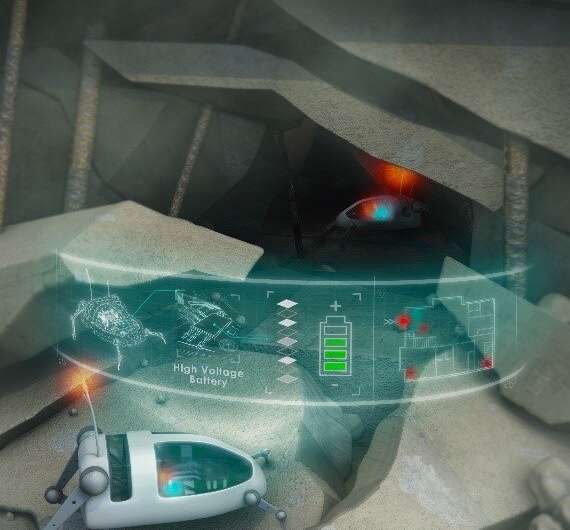
Translating electrochemical performance of large format batteries to microscale power sources has been a long-standing technological challenge, limiting the ability of batteries to power microdevices, microrobots and implantable medical devices. University of Illinois Urbana-Champaign researchers have created a high-voltage microbattery (> 9 V), with high-energy and -power density, unparalleled by any existing battery design.
Material Science and Engineering Professor Paul Braun (Grainger Distinguished Chair in Engineering, Materials Research Laboratory Director), Dr. Sungbong Kim (Postdoc, MatSE, current assistant professor at Korea Military Academy, co-first author), and Arghya Patra (Graduate Student, MatSE, MRL, co-first author) recently published their paper “Serially integrated high-voltage and high-power miniature batteries” in Cell Reports Physical Science.
The team demonstrated hermetically sealed (tightly closed to prevent exposure to ambient air), durable, compact, lithium batteries with exceptionally low package mass fraction in single-, double-, and triple-stacked configurations with unprecedented operating voltages, high power densities, and energy densities.
Braun explains, “We need powerful tiny batteries to unlock the full potential of microscale devices, by improving the electrode architectures and coming up with innovative battery designs.” The problem is that as batteries become smaller, the packaging dominates the battery volume and mass while the electrode area becomes smaller. This results in drastic reductions in energy and power of the battery.
In their unique design of powerful microbatteries, the team developed novel packaging technology that used the positive and negative terminal current collectors as part of the packaging itself (rather than a separate entity). This allowed for the compact volume (≤ 0.165 cm3) and low package mass fraction (10.2%) of the batteries. In addition, they vertically stacked the electrode cells in series (so the voltage of each cell adds), which enabled the high operating voltage of the battery.
Another way these microbatteries are improved is by using very dense electrodes which offers energy density. Normal electrodes are almost 40% by volume occupied by polymers and carbon additives (not active materials). Braun’s group has grown electrodes by an intermediate temperature direct electrodeposition technique which are fully dense and without polymer and carbon additives. These fully dense electrodes offer more volumetric energy density than their commercial counterparts. The microbatteries in this research were fabricated using the dense electroplated DirectPlate LiCoO2 electrodes manufactured by Xerion Advanced Battery Corporation (XABC, Dayton, Ohio), a company that spun out of Braun’s research.
Patra mentions, “To date, electrode architectures and cell designs at the micro-nano scale have been limited to power dense designs that came at the cost of porosity and volumetric energy density. Our work has been successful to create a microscale energy source that exhibits both high power density and volumetric energy density.”
An important application space of these microbatteries includes powering insect-size microrobots to obtain valuable information during natural disasters, search and rescue missions, and in hazardous environments where direct human access is impossible.
Co-author James Pikul (Assistant Professor, Department of Mechanical Engineering and Applied Mechanics, University of Pennsylvania) points out that “the high voltage is important for reducing the electronic payload that a microrobot needs to carry. 9 V can directly power motors and reduce the energy loss associated with boosting the voltage to the hundreds or thousands of volts needed from some actuators. This means that these batteries enable system level improvements beyond their energy density enhancement so that the small robots can travel farther or send more critical information to human operators.”
Kim adds, “Our work bridges the knowledge gap at the intersection of materials chemistry, unique materials manufacturing requirements for energy dense planar microbattery configurations, and applied nano-microelectronics that require a high-voltage, on-board type power source to drive microactuators and micromotors.”
Braun, a pioneer in the field of battery miniaturization, concludes, “our current microbattery design is well-suited for high-energy, high-power, high-voltage, single-discharge applications. The next step is to translate the design to all solid-state microbattery platforms, batteries which would inherently be safer and more energy dense than liquid-cell counterparts.”























